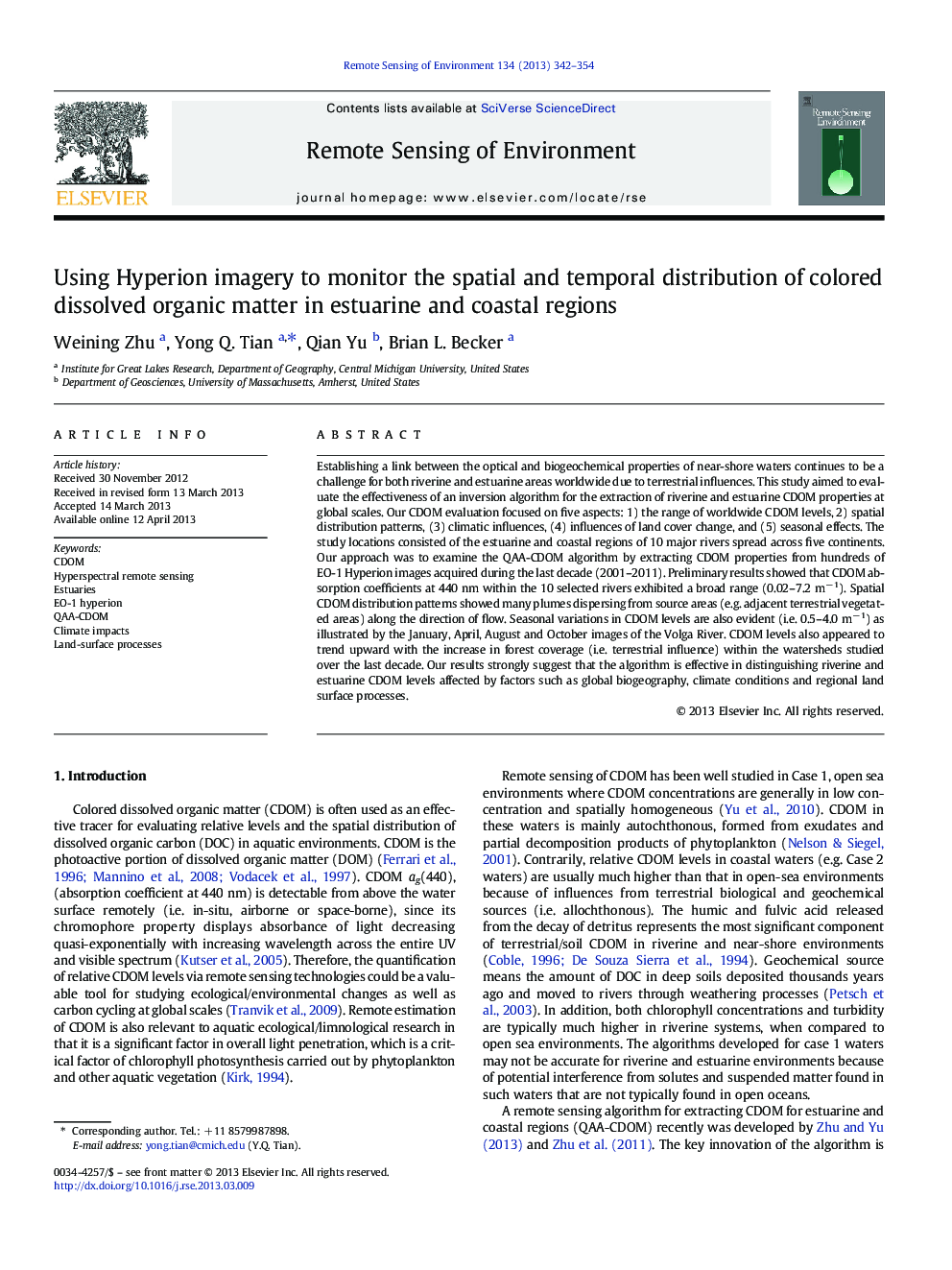| کد مقاله | کد نشریه | سال انتشار | مقاله انگلیسی | نسخه تمام متن |
|---|---|---|---|---|
| 4459183 | 1621266 | 2013 | 13 صفحه PDF | دانلود رایگان |

• Examine if separating CDOM and sediment absorption coefficients has advantages
• First effort of extracting broad range of CDOM levels in estuaries worldwide
• Identify the influences of climate, land-use & seasons on CDOM via remote sensing
Establishing a link between the optical and biogeochemical properties of near-shore waters continues to be a challenge for both riverine and estuarine areas worldwide due to terrestrial influences. This study aimed to evaluate the effectiveness of an inversion algorithm for the extraction of riverine and estuarine CDOM properties at global scales. Our CDOM evaluation focused on five aspects: 1) the range of worldwide CDOM levels, 2) spatial distribution patterns, (3) climatic influences, (4) influences of land cover change, and (5) seasonal effects. The study locations consisted of the estuarine and coastal regions of 10 major rivers spread across five continents. Our approach was to examine the QAA-CDOM algorithm by extracting CDOM properties from hundreds of EO-1 Hyperion images acquired during the last decade (2001–2011). Preliminary results showed that CDOM absorption coefficients at 440 nm within the 10 selected rivers exhibited a broad range (0.02–7.2 m− 1). Spatial CDOM distribution patterns showed many plumes dispersing from source areas (e.g. adjacent terrestrial vegetated areas) along the direction of flow. Seasonal variations in CDOM levels are also evident (i.e. 0.5–4.0 m− 1) as illustrated by the January, April, August and October images of the Volga River. CDOM levels also appeared to trend upward with the increase in forest coverage (i.e. terrestrial influence) within the watersheds studied over the last decade. Our results strongly suggest that the algorithm is effective in distinguishing riverine and estuarine CDOM levels affected by factors such as global biogeography, climate conditions and regional land surface processes.
Journal: Remote Sensing of Environment - Volume 134, July 2013, Pages 342–354